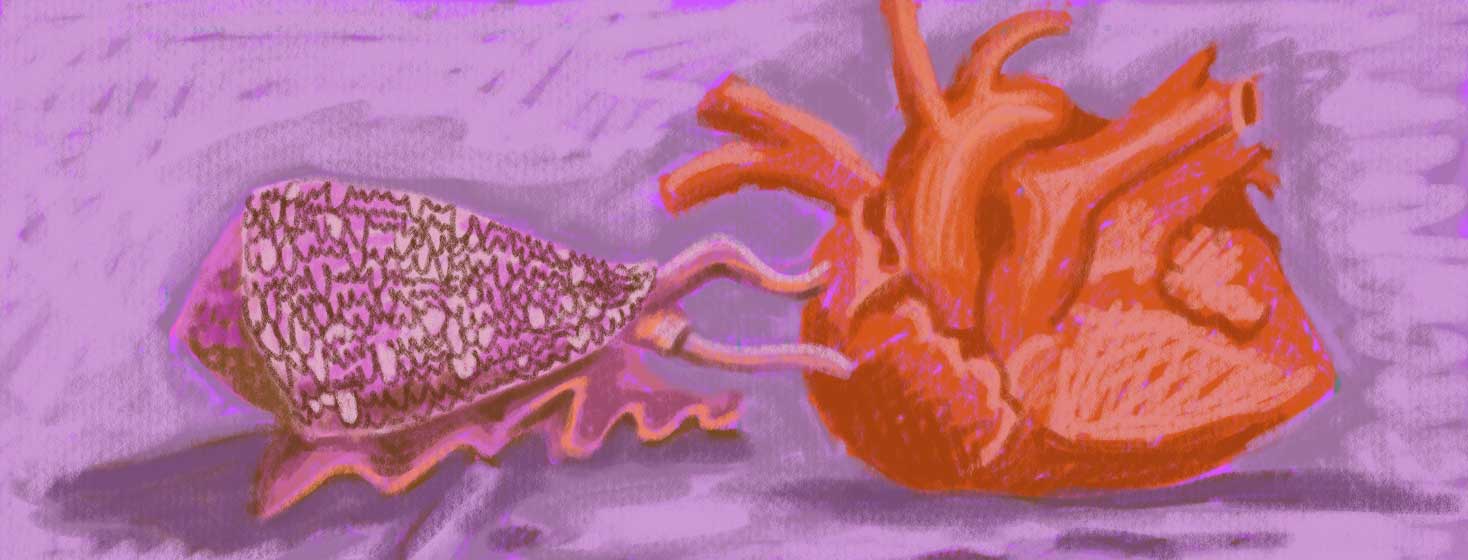Could Snail Venom Help Save Hearts?
Antiarrhythmics are a class of drugs used to treat irregular firing patterns in the heart. The pattern can be too fast, too slow, or erratic. When the heart’s electrical pattern is irregular, the heart cannot pump blood through the body well.
One way to treat a heartbeat that is too fast (tachycardia) is a potassium channel blocker.1,2 These drugs can slow down the heart rate and relieve the arrhythmia. Recently, a new area of research has opened up in this field. Researchers have found that cone snail venom also blocks potassium channels.3,4
However, it does not do this in the same way that current, known drugs do. Understanding how cone snail venom work could open up the drug discovery field. It could help researchers create new drugs that work in the same way but with fewer side effects.
How does cone snail venom work?
Cone snail venom works by blocking potassium channels in the heart. This is similar to other antiarrhythmic drugs such as amiodarone, dronedarone, or bretylium.3,4
Potassium channels are 1 of the proteins that help maintain a regular heartbeat. A heart beats by using electrical impulses to contract the muscle. This contraction is what pumps blood. There are 2 phases to this electrical signal: the impulse and the recovery. Potassium channels are responsible for the recovery phase. When you block potassium channels, it takes longer for cells to recover after firing. This makes the heart beat slower.2
Many other drugs work in this way to treat tachycardia. However, known drugs generally work by blocking the channel internally. If you block the pore of the channel, no potassium can get through.2,3
Many venoms, including cone snail venom, cause paralysis in their victims by acting on potassium channels. This is why researchers were looking at it as a potential drug development area.3,4
The venom seems to act similarly to known antiarrhythmics. However, cone snail venom does not block potassium channels in the same way that known antiarrhythmics do. It works by collapsing the channel from the outside. The venom changes the actual bonds of the protein, making it collapse inward.4
A potential new path
Cone snail venom could create a new path for antiarrhythmic drugs. This is because it acts on the outside of the protein, not the inside pore. The pores of potassium channels are conserved across evolution.3
They look the same across many cell types and tissues. This means that a drug that works on the channel pore could affect the heart, muscle, and brain. However, the outside of the potassium channels are much different between cells and tissues.3
A drug that targets this part of the protein could be more specific for heart tissue. This could decrease the number of side effects.
Possible side effects and things to know
This is an active area of research. Not everything is known about the possible side effects of drugs developed from snail venom.1,2
Researchers are still studying how cone snail venom may be used to create new medicines. The process to develop a drug from venom is a long process and requires many studies to test effectiveness and safety in humans.
Do you have a heart failure story? Click the button below to share with our community!

Join the conversation